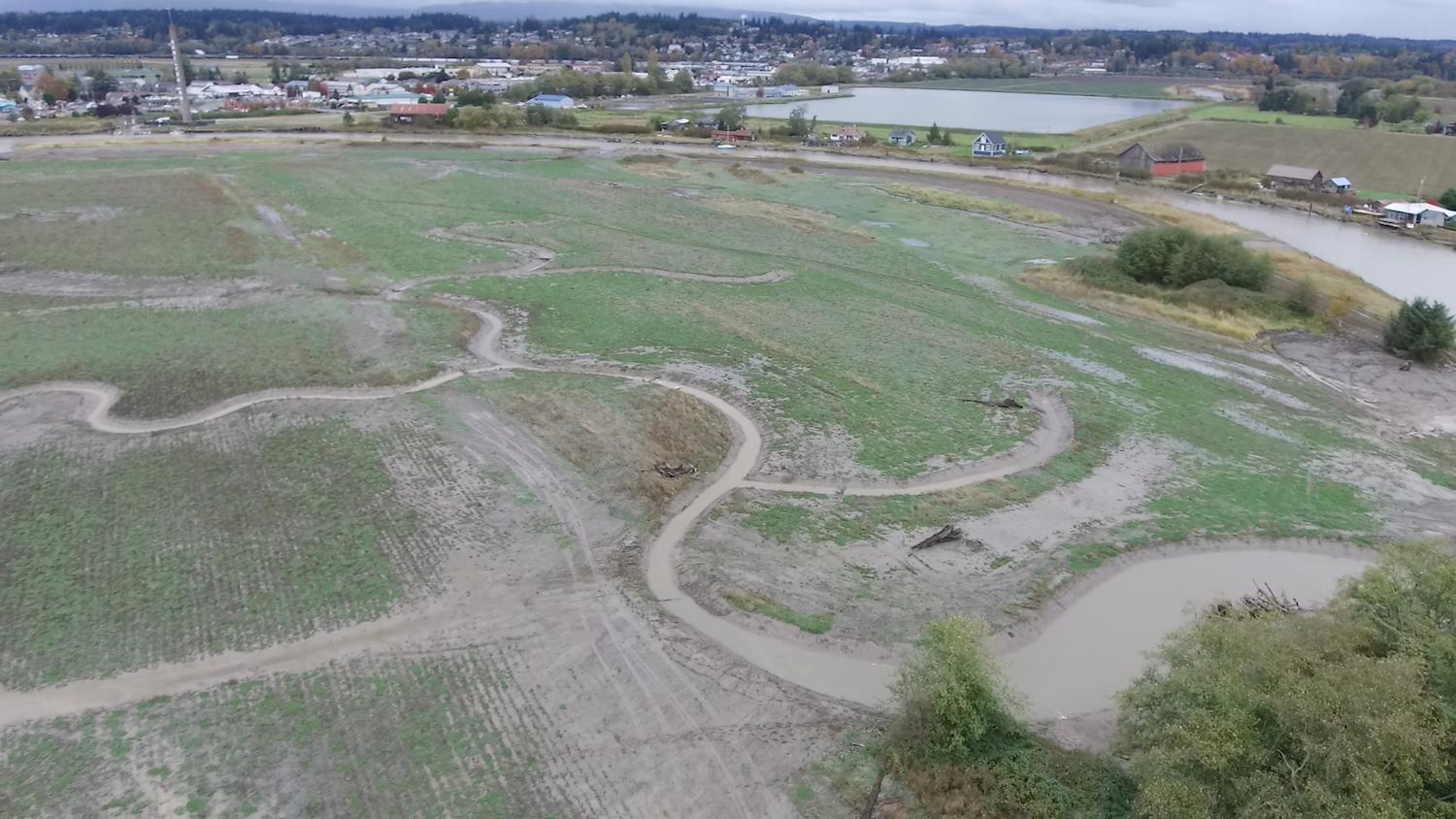In 2017, the Stillaguamish Tribe and partners completed the tidal portion of the zis a ba estuary restoration project, restoring an area that had been diked and farmed for more than a century. The Tribe secured funding and collaborated with multiple partners to do the planning and on-the-ground work that ultimately returned tidal and riverine influence to 88 acres. The list of project benefits is long: estuarine wetlands were restored for fish and wildlife species, the surrounding farmland was protected, flood control was improved and opportunities for cultural practices such as plant harvest were increased. And, yes, it is also good for birds!
The Tribe worked with the State of Washington’s Department of Ecology to secure a National Coastal Wetlands Conservation Grant, and additional funding was provided from the Washington Salmon Recovery Funding Board. The existing dike was removed and a “setback levee” was built, allowing for a more natural estuary while also protecting property nearby.

Estuaries are rich biological environments, but it takes both the riverine and tidal influences to make an estuary function as it should ecologically. This project restores those influences. One species that will benefit is the Chinook salmon which has fallen to precipitous lows in the Stillaguamish River. For birds, the restored estuary provides mudflats, river channels, wetlands and riparian areas.
At the flyway level, the greater Skagit and Stillaguamish Delta is a stopover for migratory waterfowl, and supports migrating songbirds, shorebirds and waterbirds. The combined estuaries were once part of a much larger system that supported incredible numbers of migratory and resident birds. A short list of birds that will benefit as these coastal estuaries are restored includes: Bald eagle, Peregrine Falcon, Osprey, Great Blue Heron, Greater Yellowlegs, Dunlin, Western Sandpiper, Green-winged Teal, Northern Shoveler, Mallard and Northern Pintail.
Funding, implementation and/or technical partners on this project included: Stillaguamish Indian Tribe, Washington Department of Ecology, U.S. Fish and Wildlife Service, Ducks Unlimited, Skagit River System Cooperative, Washington Department of Fish and Wildlife, and the Washington Recreation Conservation Office Salmon Recovery Board.
Want to learn more about National Coastal Wetlands Grants? See our Funding Page for more information about major federal funding programs.
Washington partners: check out the Department of Ecology's NCWC grants page.
Thank you to Lora Leschner, Pacific Birds Habitat Joint Venture, for contributing to this post.
